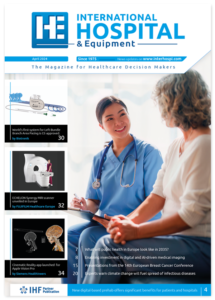Patients identify six key areas for surgeon communication
A systematic review of patient perspectives reveals that cancer patients prioritise emotional support, optimistic demeanour, and realistic expectation-setting from their surgical oncologists alongside clinical expertise. The research identifies six distinct communication domains that shape patient satisfaction and treatment adherence.
Surgical oncologists serve as critical first points of contact for cancer patients, yet relatively little research has examined what communication approaches patients actually value during these pivotal interactions. A new systematic review presented at the American College of Surgeons Clinical Congress 2025 in Chicago addresses this gap, analysing patient preferences across cancer care settings.
The research team, led by Dr Shruti Koti from the department of surgery at the Donald and Barbara Zucker School of Medicine at Hofstra/Northwell Health in New Hyde Park, New York, examined 2,402 studies from research databases, ultimately identifying 15 studies meeting their inclusion criteria for both qualitative and quantitative analysis of patient communication preferences in surgical oncology.
Six domains of effective communication
The systematic review identified six overarching areas of communication valued by cancer patients:
- Emotional support, optimism, and surgeon demeanour: Patients preferred surgeons who balanced factual information with empathetic language acknowledging the emotional weight of cancer diagnosis.
- Setting patient expectations: Patients valued care providers who helped them understand long-term treatment effects, associated risks, and quality-of-life implications rather than focusing solely on immediate procedural details.
- Use of communication aids or tools: Patients appreciated tangible gestures such as surgeons sitting down during consultations or offering a reassuring pat on the shoulder, alongside visual aids including pictures and pamphlets explaining their diagnosis.
- Shared decision-making: Whilst some patients preferred surgeons to determine treatment plans independently, others expressed desire for active participation in treatment choices. This variability suggests surgeons should adopt individualised approaches when determining patient involvement levels in treatment decisions.
- Prognosis and long-term outlook: Most patients wanted statistical information about their cancer and expected outcomes. However, when facing poor prognoses, patients generally preferred fewer prognostic details, reflecting the delicate balance care teams must strike between optimism and realism, particularly for complex cancers.
- Office setting and team logistics: Patients preferred multidisciplinary team approaches and valued knowing their surgeon communicated with other team members, including translators, nutritionists, and social workers when appropriate.
Communication as a learnable skill
“Going into this review, we had no idea whether patients wanted to see their surgeon use a very direct and fact-based approach, or if they preferred surgeons who were more hopeful, optimistic, and appeared invested in their emotional well-being,” Dr Koti said. “We ended up finding that patients really look for emotional support from their surgeons, and they find a lot of value in surgeons sitting down and being upfront with them, but in a very hopeful way that maintains optimism.”
Dr Koti emphasised that whilst surgeons receive extensive procedural training, communication skills often receive less formal attention. This research breaks down communication into concrete, manageable components that can be practised and refined similarly to technical surgical skills.
“Effective communication is crucial in patient care, and has been linked to improved patient outcomes, increased satisfaction, and better adherence to treatment,” she said. “Recognising important domains of communication can help both patients and surgeons, as well as other members of the health care team, approach a common understanding.”
Study limitations and future directions
The review’s relatively small sample size of 15 studies limits generalisability. Few included studies reported demographic information such as education level, income, and insurance status. Additionally, none examined how surgeon characteristics including age, race, and gender impacted patient perspectives. Future research will investigate these factors’ influence on communication preferences.
Reference
Koti, S., Harvey, R., Wu, G., Lee, J. S., et. al. (2025). Six domains of communication: Findings from a systematic review of patient communication preferences in surgical oncology. Abstract presented at American College of Surgeons Clinical Congress 2025 Scientific Forum, 4-7 October 2025, Chicago, IL.


